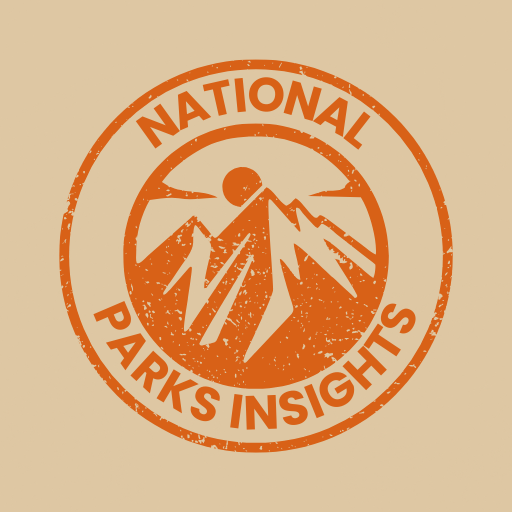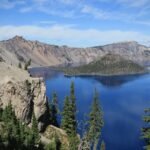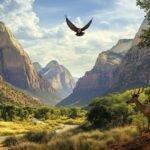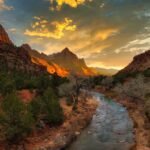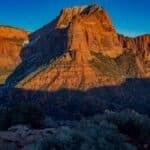Discovering National Parks in Utah

Utah’s national parks are a goldmine of natural beauty and wildlife. If you love the outdoors, you’re in for a treat. Let’s check out the unique wildlife of Southern Utah and the cool amphibians in Zion National Park.
Wildlife in Southern Utah

Southern Utah is a paradise for animal lovers. The different habitats in the national parks are home to a variety of creatures. Here’s a peek at some you might see:
- Deer: Often munching in open fields.
- Bighorn Sheep: Climbing rocky cliffs.
- Elk: Hanging out in higher places.
- Rabbits: Darting through the bushes.
- Birds: From hawks to eagles, there’s plenty to spot.
- Bats: Flying around at dusk.
- Foxes: Rare, but you might get lucky.
- Wild Cats: Including bobcats and the elusive mountain lions.
| Wildlife Species | Habitat | How Often You’ll See Them |
|---|---|---|
| Deer | Meadows | Often |
| Bighorn Sheep | Rocky Cliffs | Often |
| Elk | Higher Elevations | Often |
| Rabbits | Underbrush | Often |
| Birds | Various | Often |
| Bats | Twilight Hours | Often |
| Foxes | Various | Rare |
| Wild Cats (Bobcats, Mountain Lions) | Remote Areas | Rare |
Want to know more about wildlife in other places? Check out our articles on national parks in California and national parks in Arizona.
Amphibians in Zion National Park
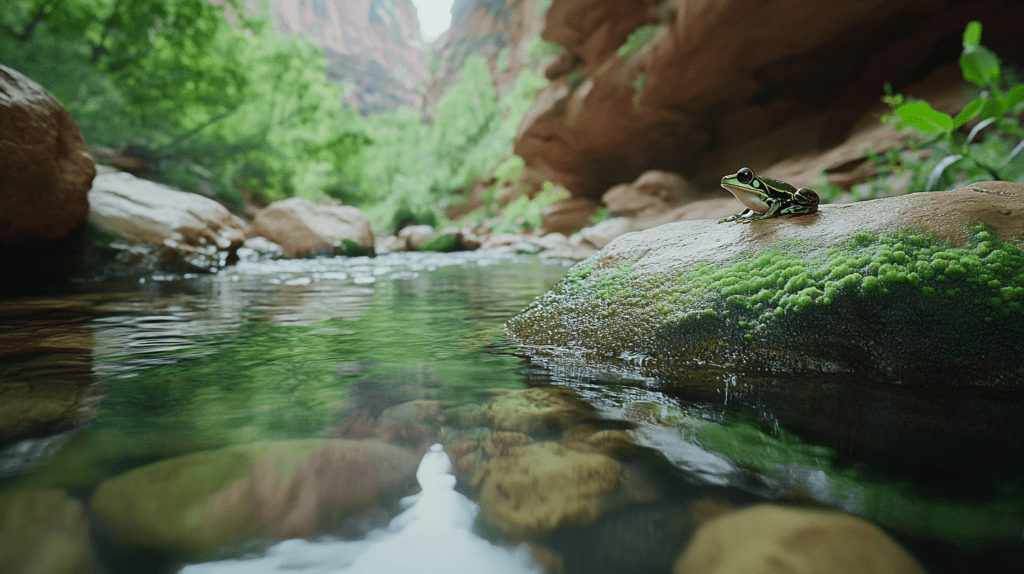
Zion National Park, one of the most famous national parks in Utah, is a hotspot for amphibians. These little guys thrive in the park’s water systems and lush spots. Some common ones you might see include:
- Frogs: Hanging out near water.
- Toads: Liking the moist, shady areas.
- Salamanders: Hiding under rocks and logs in damp places.
Zion’s amphibians are super important for keeping insect numbers down and showing how healthy the environment is. While you’re exploring, keep an eye out for these fascinating creatures.
For more on wildlife in other parks, check out our articles on national parks in Colorado and national parks in Washington.
Utah’s national parks are packed with wildlife, making your visit unforgettable. Enjoy the beauty and wonder of these natural spots as you dive into your nature adventure.
Wildlife Diversity in Utah’s National Parks
Utah’s national parks are a treasure trove of wildlife, giving you a front-row seat to nature’s show. From the big and bold to the small and speedy, there’s something for everyone to marvel at.
Black Bears and Chipmunks
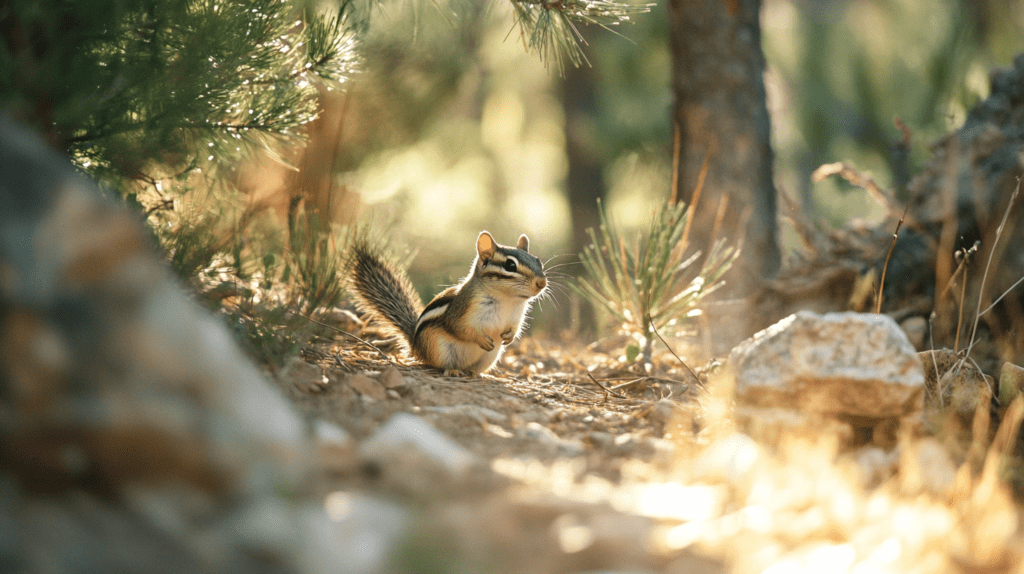
In Utah’s national parks, you might bump into black bears, especially in Bryce Canyon and sometimes in Arches and Canyonlands. These bears are a sight to behold but remember to keep your distance and follow park rules to stay safe. Unlike other places, Utah’s parks don’t have grizzly bears, so black bears are the top dogs here.
Chipmunks are another frequent sight. These tiny, striped critters are always on the move, gathering food and darting between rocks. They bring a lively vibe to the peaceful surroundings and are especially common in areas with lots of plants.
| Wildlife | Common Locations | Notes |
|---|---|---|
| Black Bears | Bryce Canyon, Arches, Canyonlands | Largest predators in the parks |
| Chipmunks | Dense vegetation areas | Abundant and active |
Mountain Lions and Peregrine Falcons

Mountain lions, or cougars, are some of the most elusive and awe-inspiring animals in Utah’s parks. These big cats are mostly active at night and usually steer clear of people, but they’re vital for keeping the ecosystem balanced. Zion National Park is a prime spot to maybe catch a glimpse of these majestic creatures, along with other animals like bighorn sheep and mule deer.
Peregrine falcons, famous for their incredible speed and hunting skills, are another highlight. These birds can dive at over 200 miles per hour, making them the fastest animals on Earth. You can often spot them soaring high above the cliffs and canyons, especially in Zion and Capitol Reef National Parks.
| Wildlife | Common Locations | Notes |
|---|---|---|
| Mountain Lions | Zion, Bryce Canyon | Nocturnal and elusive |
| Peregrine Falcons | Zion, Capitol Reef | Fastest animals on the planet |
Exploring the wildlife in Utah’s national parks is a thrilling adventure. From the impressive black bears to the lightning-fast peregrine falcons, these parks let you get up close and personal with nature’s wonders. Dive deeper into the interconnected national parks in Utah and their unique wildlife to plan an unforgettable trip. For more info on other national parks, check out our guides on national parks in California, national parks in Arizona, and national parks in Colorado.
Why Each Park Stands Out
Utah’s national parks are like nature’s playgrounds, each with its own charm and jaw-dropping views. Every park has something special that makes it worth the trip.
Arches National Park Highlights

Arches National Park in Moab, Utah, is a treasure trove with over 2,000 natural stone arches. It’s the place to be for anyone who loves the great outdoors or snapping stunning photos. The park’s mix of colors and textures is a feast for the eyes.
Must-see spots in Arches National Park:
- Delicate Arch: This is the superstar of arches. If you visit, you gotta see it.
- Landscape Arch: Stretching 306 feet, it’s one of the longest natural arches around.
- Double Arch: A cool formation that’s perfect for unique photos.
- Fiery Furnace: A maze of narrow paths and towering rocks.
| Feature | Description |
|---|---|
| Delicate Arch | Famous and iconic arch |
| Landscape Arch | One of the longest natural arches |
| Double Arch | Unique double-arch formation |
| Fiery Furnace | Maze-like area with narrow passages |
For more cool parks, check out our pages on national parks in California and national parks in Arizona.
Get more Information on National Parks by clicking here
Capitol Reef National Park Wonders

Capitol Reef National Park, in south-central Utah, is a hidden treasure with amazing views and a rich history. The park is famous for its colorful canyons, dome formations, and unique geological features.
Top spots in Capitol Reef National Park:
- Waterpocket Fold: A nearly 100-mile long wrinkle in the Earth’s crust with colorful cliffs and canyons.
- Cathedral Valley: Home to the iconic Temple of the Sun and Temple of the Moon formations.
- Capitol Dome: A striking white sandstone dome that looks like the US Capitol building.
- Historic Fruita District: An old Mormon settlement with orchards where you can pick fresh fruit in season.
| Feature | Description |
|---|---|
| Waterpocket Fold | Colorful cliffs and canyons |
| Cathedral Valley | Iconic formations: Temple of the Sun and Moon |
| Capitol Dome | White sandstone dome resembling the US Capitol |
| Historic Fruita District | Old settlement with seasonal fruit picking |
For more on national parks in the US, explore our pages on national parks in Colorado and national parks in New Mexico.
Visiting these parks lets you soak in the diverse landscapes and geological wonders that make Utah’s national parks a must-see for nature lovers.
Activities in Zion National Park
Zion National Park in Utah is a playground for outdoor lovers. Whether you’re a hardcore hiker or just love a good view, Zion’s got you covered. Two spots you can’t miss are Angel’s Landing Trail and Court of the Patriarchs.
Angel’s Landing Trail

Angel’s Landing Trail is the rock star of Zion hikes. This trail is not for the faint-hearted, with its steep climbs and narrow paths. It’s about 5.4 miles round trip and takes around 4-5 hours to finish. You’ll climb about 1,488 feet, so get ready for a workout.
| Feature | Detail |
|---|---|
| Length | 5.4 miles round trip |
| Elevation Gain | 1,488 feet |
| Duration | 4-5 hours |
| Difficulty | Strenuous |
The adventure kicks off at the Grotto Trailhead, winding through Refrigerator Canyon and Walter’s Wiggles before you hit Scout Lookout. The last half mile is a nail-biter with steep switchbacks and chains bolted into the rock to keep you safe. But the views from the top? Totally worth it. You’ll get a sweeping look at Zion Canyon and the Virgin River below.
For more hiking tips in Zion, check out our guide on national parks in Utah.
Court of the Patriarchs
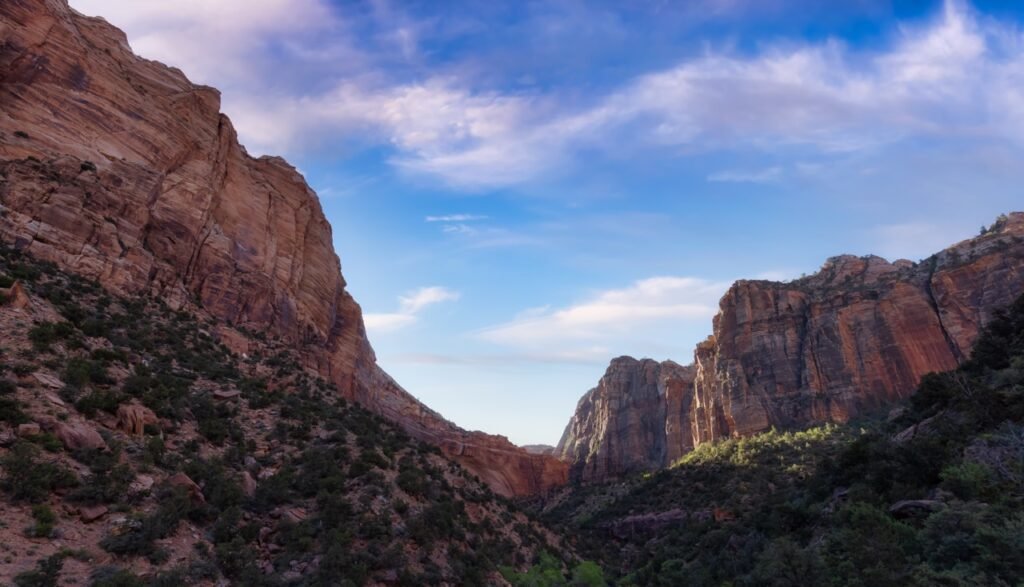
Court of the Patriarchs is another gem in Zion. This spot gives you a jaw-dropping view of three massive sandstone peaks named Abraham, Isaac, and Jacob. Unlike the grueling Angel’s Landing, this viewpoint is a breeze to get to and perfect for all ages.
| Feature | Detail |
|---|---|
| Accessibility | Easy |
| Duration | 15-30 minutes |
| Best Time to Visit | Early morning or late afternoon |
| Highlights | Views of Abraham, Isaac, and Jacob peaks |
Hop on a short shuttle ride from the Zion Visitor Center, and you’re there. A quick walk takes you to the viewpoint, where you can soak in the changing shadows and colors on the cliffs. It’s a dream spot for photographers and anyone who loves a peaceful, scenic break.
Zion National Park is packed with activities that let you get up close and personal with nature. Whether you’re braving Angel’s Landing or chilling at the Court of the Patriarchs, you’re in for some unforgettable moments.
For more ideas on exploring other national parks, check out our articles on national parks in California and national parks in Arizona.
Winter Visits to Utah’s National Parks
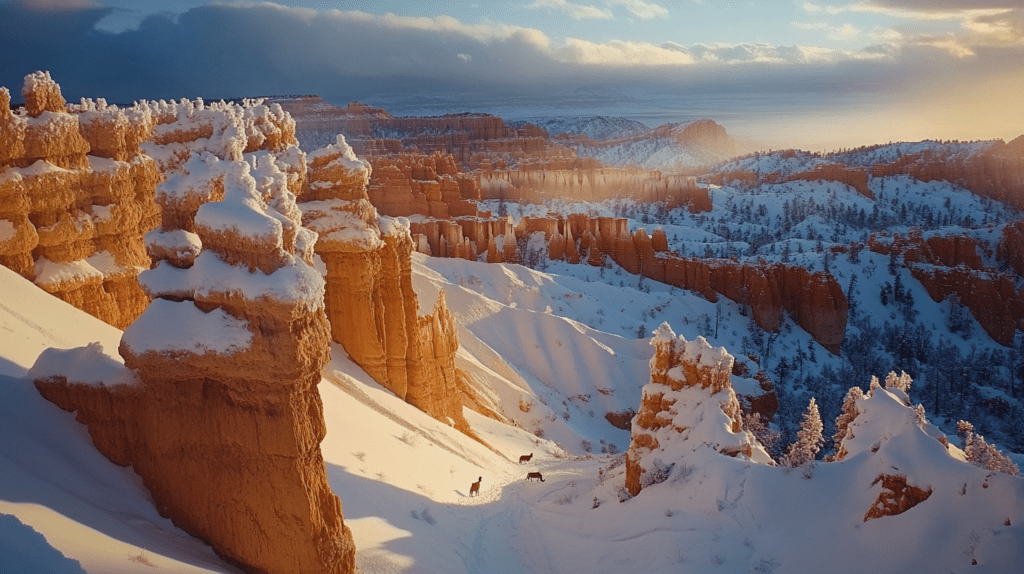
Exploring Utah’s national parks in winter is like stepping into a serene, snowy paradise. Parks-like Arches, Bryce Canyon, Canyonlands, Capitol Reef, and Zion turn into magical winter wonderlands, perfect for hiking, scenic drives, and marveling at snow-covered red rock formations.
Winter Hiking and Scenic Drives
Winter hiking in Utah’s national parks is a must-try adventure. Cooler temps and fewer people make it a peaceful experience. Trails like Angel’s Landing in Zion and Delicate Arch in Arches offer jaw-dropping views with a winter twist. Just remember to gear up properly and watch out for icy spots.
Scenic drives are another awesome way to soak in Utah’s winter beauty. Routes like the Zion-Mount Carmel Highway and Scenic Byway 12 offer stunning views of snow-capped landscapes and picturesque vistas. These drives let you enjoy the natural beauty without breaking a sweat.
| Park | Popular Winter Hike | Scenic Drive |
|---|---|---|
| Zion | Angel’s Landing | Zion-Mount Carmel Highway |
| Arches | Delicate Arch | Arches Scenic Drive |
| Bryce Canyon | Navajo Loop | Scenic Byway 12 |
Snow-Dusted Red Rock Formations
One of the coolest sights during a winter visit to Utah’s national parks is the snow-dusted red rock formations. The contrast of white snow against the fiery red rocks creates a mesmerizing landscape, perfect for photography and quiet moments.
Bryce Canyon is famous for its stunning winter scenes. The hoodoos, those tall spire-shaped rock formations, look especially striking with a layer of snow. Similarly, the arches and pinnacles in Arches National Park take on a magical quality under a blanket of snow.
Winter is also a fantastic time for stargazing in Utah’s national parks. The clear, crisp winter nights offer an unobstructed view of the night sky, making it an ideal time to spot constellations, planets, and even the Milky Way.
For more info on exploring other national parks during winter, check out national parks in Colorado or national parks in Arizona.
Winter visits to Utah’s national parks offer a unique and peaceful experience, letting you connect with nature in a way that’s different from the busy summer months. Whether you’re hiking, driving, or just soaking in the snow-dusted scenery, winter is a fantastic time to explore these natural wonders. For more tips and ideas on visiting national parks, check out our guides on national parks in California and national parks in New Mexico.
Scenic Road Trips in Utah
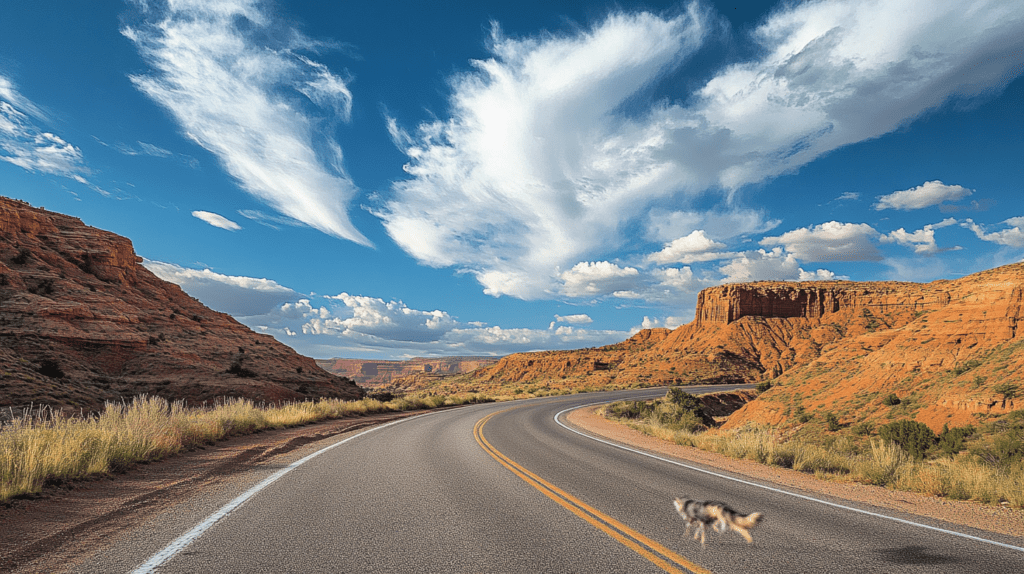
Utah’s got some of the most jaw-dropping road trips in the U.S., making it a dream for anyone who loves the great outdoors. Whether you’re into hiking, camping, or just soaking up epic views, Utah’s routes and backroads will blow your mind. Let’s check out some of the best scenic drives and the areas around the Mighty Five national parks.
Must-See Routes and Backroads
Driving through Utah, you’ll see everything from red rock wonders to lush forests. Here are some routes you can’t miss:
- Highway 12 Scenic Byway: Known as “A Journey Through Time Scenic Byway,” this 124-mile route takes you through Bryce Canyon and Capitol Reef National Parks. Expect panoramic views, historic towns, and tons of hiking spots.
- Monument Valley Road: This iconic drive dives into the heart of Navajo Nation, offering jaw-dropping views of towering sandstone buttes. It’s a favorite for photographers and anyone wanting to connect with the area’s rich cultural heritage.
- The Alpine Loop Scenic Byway: Near Provo, this 20-mile loop serves up stunning mountain scenery, lush forests, and chances to spot wildlife like moose and deer.
- Scenic Byway 163: This route cuts through the dramatic landscape of Monument Valley, offering some of the most photographed views in the Southwest.
Around the Mighty 5 Parks

Utah is home to the Mighty Five national parks: Arches, Bryce Canyon, Canyonlands, Capitol Reef, and Zion. Each park has its own vibe and stunning landmarks. Here’s a closer look at what surrounds these parks:
| Park | Key Features | Nearby Attractions |
|---|---|---|
| Arches National Park | Over 2,000 natural stone arches | Dead Horse Point State Park: Offers killer views of the Colorado River and Canyonlands |
| Bryce Canyon National Park | Unique hoodoo formations | Kodachrome Basin State Park: Famous for its colorful rock spires |
| Canyonlands National Park | Vast desert landscapes | Goblin Valley State Park: Features thousands of mushroom-shaped rock formations |
| Capitol Reef National Park | Waterpocket Fold, a geologic monocline | Fremont Indian State Park: Preserves ancient petroglyphs and pictographs |
| Zion National Park | Towering sandstone cliffs | Kolob Canyons: Less crowded area with stunning views and hiking trails |
These parks are pretty close to each other, making it easy to hit multiple parks in one trip. The Mighty Five offer a unique experience with their rugged beauty and over 1,000 miles of hiking trails.
For more info on national parks in the area, check out our articles on national parks in California, national parks in Arizona, and national parks in Colorado.
Get ready for an adventure and discover the stunning beauty of Utah’s national parks through these unforgettable scenic road trips.
The Mighty Five National Parks
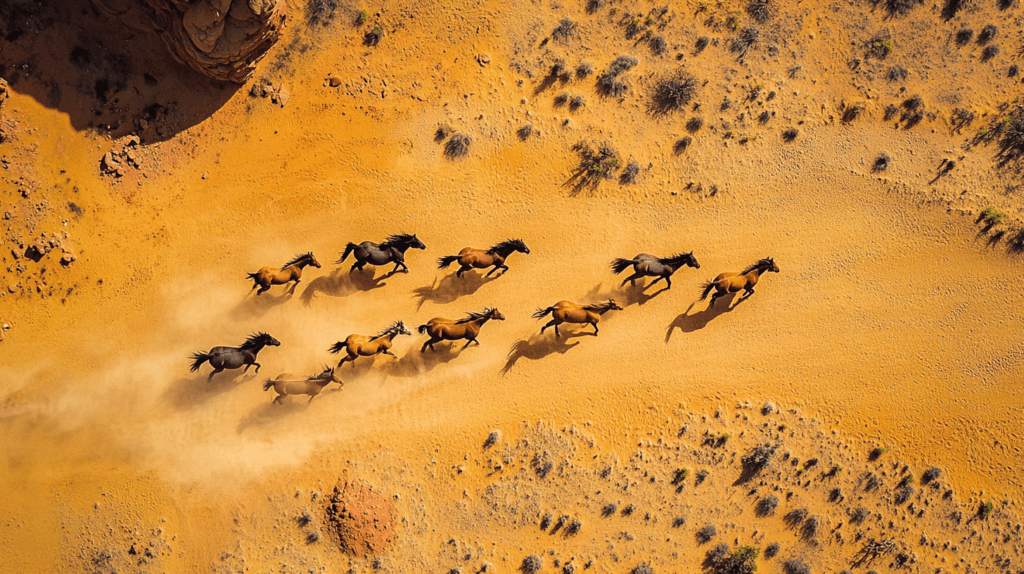
Utah’s got a treasure trove of natural wonders with its Mighty Five national parks: Arches, Bryce Canyon, Canyonlands, Capitol Reef, and Zion. Each park has its own flavor, offering a unique adventure for anyone who loves the great outdoors.
What Makes Each Park Special
Let’s break down what makes each of these parks a must-see:
| National Park | Unique Features |
|---|---|
| Arches | Home to over 2,000 natural arches, including the famous Delicate Arch and Landscape Arch. |
| Bryce Canyon | Known for its hoodoos—those tall, thin spires of rock that look like something out of a fantasy novel. |
| Canyonlands | A dramatic desert landscape carved by the Colorado River, featuring canyons, mesas, and buttes. |
| Capitol Reef | Offers sweeping vistas with twisted landscapes, a mix of desert rock and sky that’s perfect for your Instagram feed. |
| Zion | Famous for its steep red cliffs and the Virgin River, which creates stunning waterfalls and pools. |
Each park is like a different chapter in a book of natural wonders. Whether you’re hiking through the arches at Arches or marveling at the hoodoos in Bryce Canyon, there’s something jaw-dropping around every corner.
The Ultimate Road Trip
One of the coolest things about the Mighty Five is how close they are to each other. You can hit multiple parks in one epic road trip, soaking in a variety of landscapes without spending all your time driving.
| Distance Between Parks (Approx.) | Time |
|---|---|
| Arches to Canyonlands | 30 miles |
| Bryce Canyon to Zion | 72 miles |
| Capitol Reef to Arches | 133 miles |
Planning a road trip through these parks is like hitting the jackpot for nature lovers. For more scenic road trip ideas, check out our guide on Scenic Road Trips in Utah.
Utah’s Mighty Five are a dream come true for anyone who loves hiking, camping, or just soaking in breathtaking views. And if you’re looking to expand your adventure, check out the national parks in California or national parks in Arizona. Happy exploring!
How National Parks Boost Local Economies
Visitor Spending: Dollars and Jobs
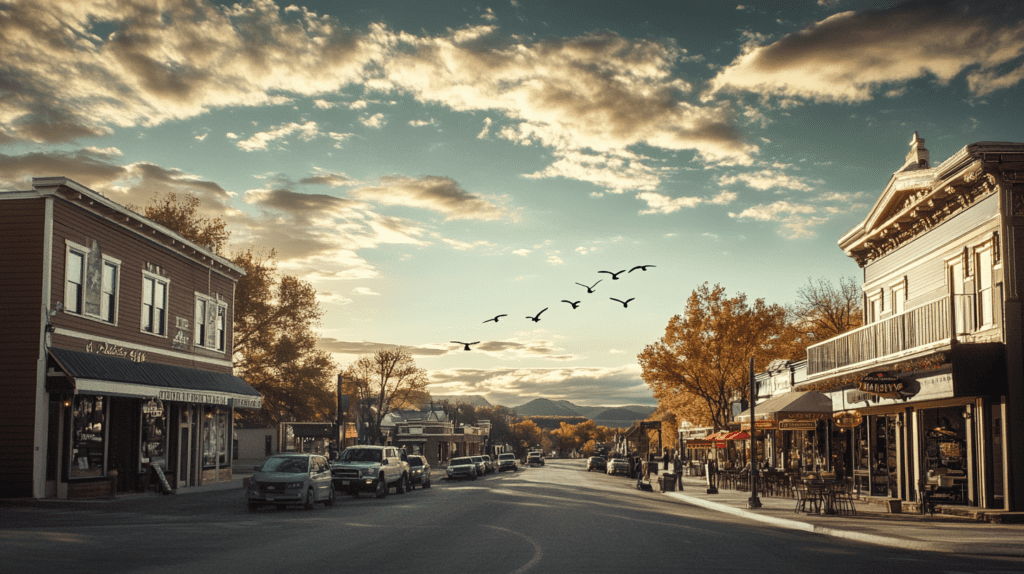
When you visit Utah’s national parks, you’re not just soaking in the beauty; you’re also giving the local economy a big thumbs-up. Tourists like you pump billions into nearby towns, creating jobs and helping businesses thrive.
| Year | Visitor Spending (in billions) | Jobs Created |
|---|---|---|
| 2018 | $20.2 | 329,000 |
| 2019 | $21.0 | 340,500 |
| 2020 | $14.5 | 237,000 |
| 2021 | $28.6 | 451,000 |
Check out these numbers from the National Park Service and U.S. Geological Survey. The pandemic hit hard in 2020, but 2021 bounced back big time with $28.6 billion in spending and 451,000 new jobs. That’s a lot of paychecks!
Want to see how other states stack up? Peek at the economic impacts of California’s national parks and Arizona’s national parks.
More Than Just Tourism
Utah’s national parks do more than just draw tourists. They help local economies shift away from old-school industries like oil, mining, and timber. Outdoor fun brings in new residents, entrepreneurs, and businesses looking for a better lifestyle.
| Sector | Percentage of Local Economy |
|---|---|
| Tourism and Recreation | 40% |
| Oil and Gas | 15% |
| Timber and Mining | 10% |
| Other | 35% |
The benefits go beyond just spending money. National parks make the local economy stronger and more varied by attracting different kinds of businesses and people. But, hey, it’s not all sunshine and rainbows. This growth can lead to pricey housing and crowded parks.
Curious about how national parks affect other states? Check out the economic effects on Colorado’s national parks and Texas’s national parks.
So, when you visit and support Utah’s national parks, you’re not just having a great time. You’re also helping local communities and making sure these natural wonders stick around for future generations.
Latest Update and News
Utah’s national parks continue to be popular destinations, with some important updates for visitors to be aware of:
Arches National Park Timed Entry System
Arches National Park has implemented a timed entry reservation system for visits between April 1 and October 31. Visitors must reserve a timed entry ticket in advance to enter the park between 6 am and 5 pm during this period. This system aims to reduce congestion and improve the visitor experience during peak season.
Zion National Park Shuttle System Changes
Zion National Park has made changes to its shuttle system for 2024. The park will now offer year-round shuttle service in Zion Canyon, with increased frequency during peak seasons. Additionally, the park has introduced a new reservation system for certain hikes, including Angels Landing, to manage crowds and enhance safety.
Bryce Canyon Dark Sky Designation
Bryce Canyon National Park was recently certified as an International Dark Sky Park, recognizing its exceptional stargazing opportunities. The park has implemented lighting improvements and offers expanded night sky programs for visitors.
Capitol Reef Fruit Harvest Update
Capitol Reef National Park’s historic orchards are expecting a bountiful harvest in 2024. Visitors can participate in “U-Pick” fruit harvests throughout the summer and fall, with specific fruit availability varying by season.
Canyonlands Backcountry Permit System
Canyonlands National Park has transitioned to a new online backcountry permit system. Visitors planning overnight backcountry trips or day use of certain areas like White Rim Road must now obtain permits through this new platform.
Frequently Asked Questions About National Parks in Utah
When is the best time to visit Utah's national parks?
Spring (March-May) and fall (September-November) are generally the best times to visit. The weather is mild, and crowds are smaller than in summer. Summer (June-August) is popular but can be very hot, while winter (December-February) brings snow and cold temperatures but fewer visitors.
How many national parks are in Utah?
Utah is home to the "Mighty Five" national parks:
Arches National Park
Bryce Canyon National Park
Canyonlands National Park
Capitol Reef National Park
Zion National Park
Do I need reservations to enter the parks?
Most parks don't require reservations, but Arches National Park requires timed entry tickets from April through October. It's always best to check the official National Park Service website for the most up-to-date information.
What's the best way to avoid crowds?
To avoid crowds:
Visit during off-peak seasons (spring or fall)
Arrive early in the morning or later in the afternoon
Explore less popular trails and areas of the parks
Visit on weekdays rather than weekends
How much does it cost to enter the parks?
Entrance fees vary by park but typically range from $20 to $35 per vehicle. An America the Beautiful Pass ($80) covers entry to all national parks for a year and is worth considering if you plan to visit multiple parks.
What should I pack for a trip to Utah's national parks?
Essential items include:
Plenty of water (at least 1 gallon per person per day)
Sun protection (hat, sunscreen, sunglasses)
Sturdy hiking shoes
Layers of clothing (temperatures can vary widely)
Snacks and food
First aid kit
Map or GPS device
Are there guided tours available in the parks?
Yes, most parks offer ranger-led programs and guided tours. You can also find private tour operators in gateway towns near the parks.
Can I camp in the national parks?
Yes, all five Utah national parks have campgrounds. However, they can fill up quickly, especially in peak season. Reservations are recommended where available.
Is it possible to visit all five Utah national parks in one trip?
While ambitious, it is possible to visit all five parks in one trip. A minimum of 7-10 days is recommended to see the highlights of each park without feeling too rushed.
Are the parks accessible by public transportation?
Most visitors need a car to access and explore Utah's national parks. There is limited public transportation to the parks, so renting a vehicle is usually the best option.
Remember to always check the official National Park Service website for the most current information before your visit, as conditions and regulations can change.
